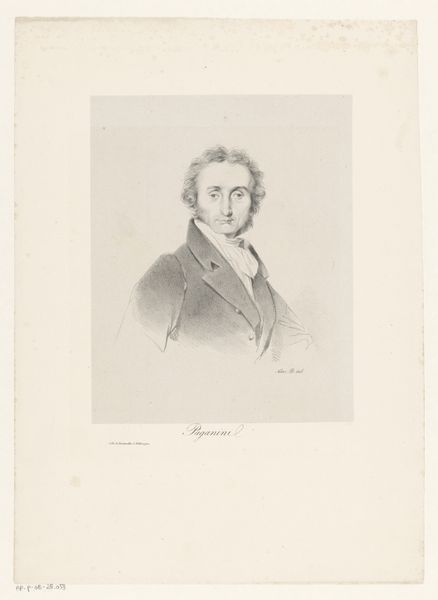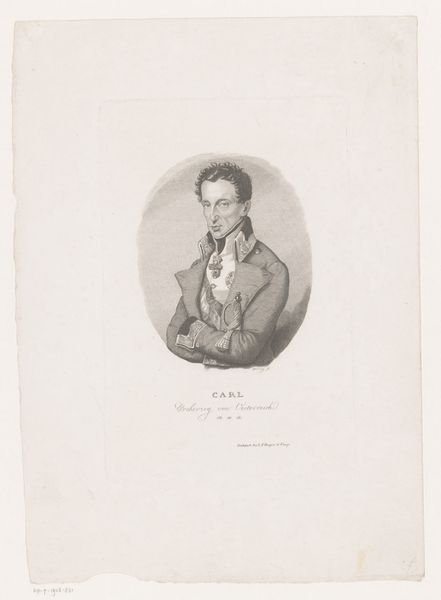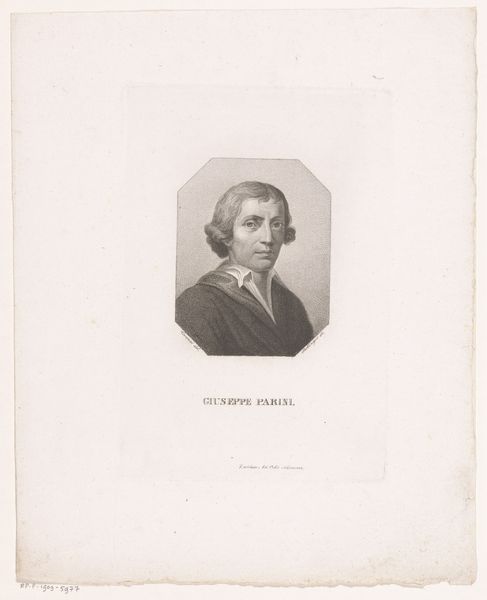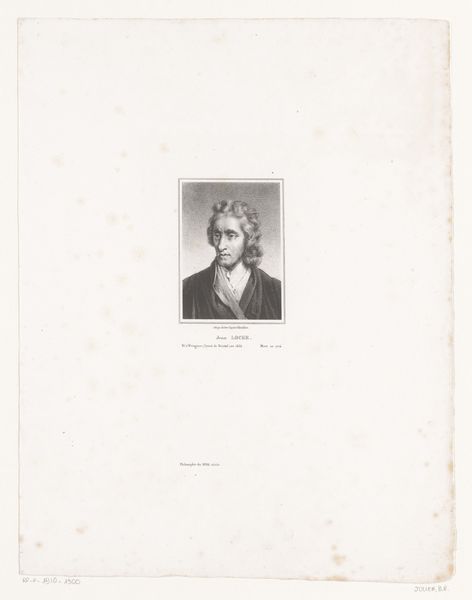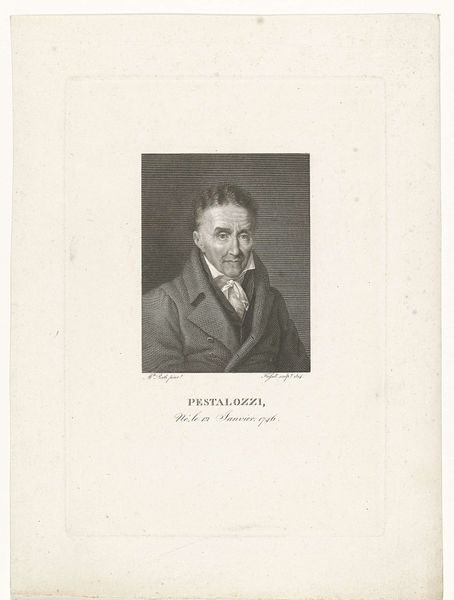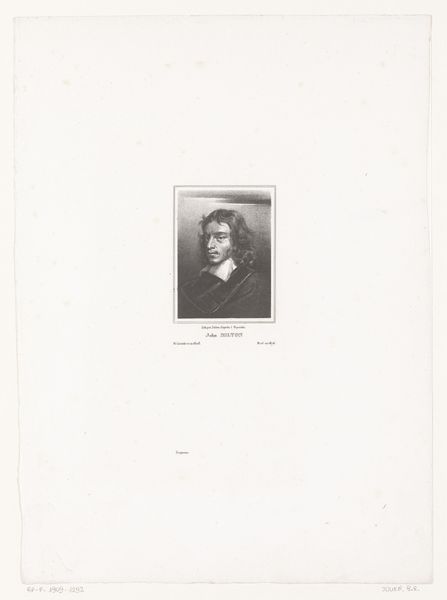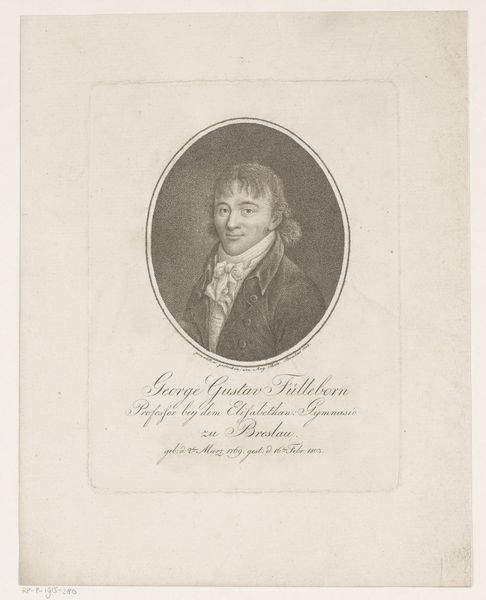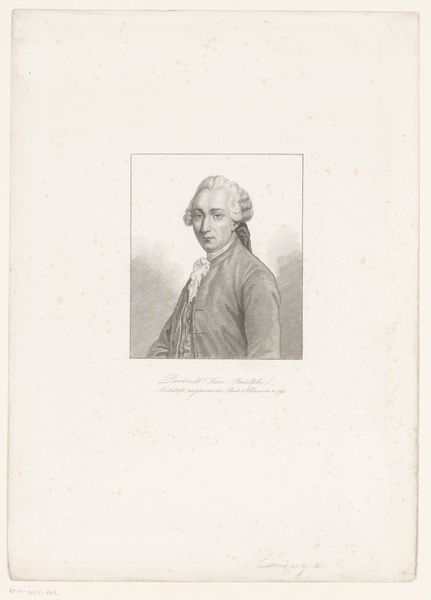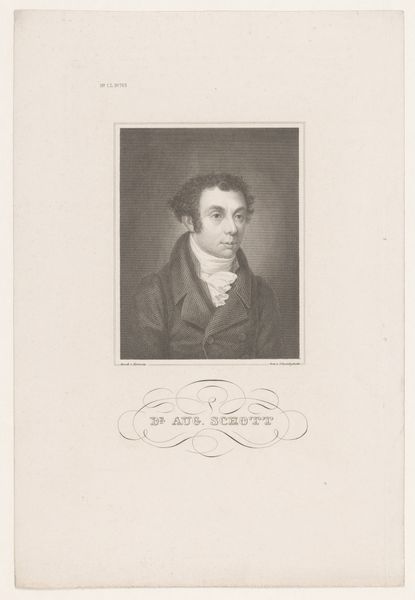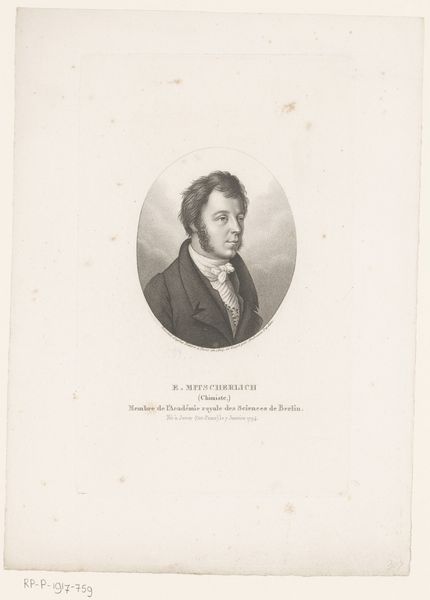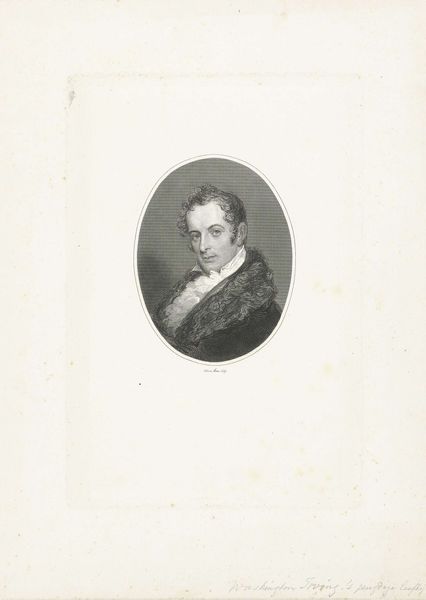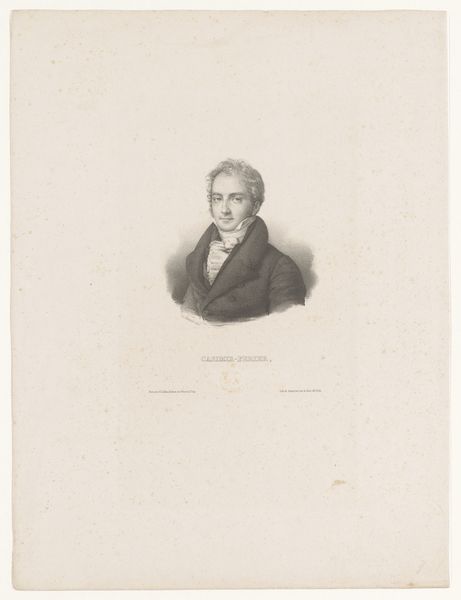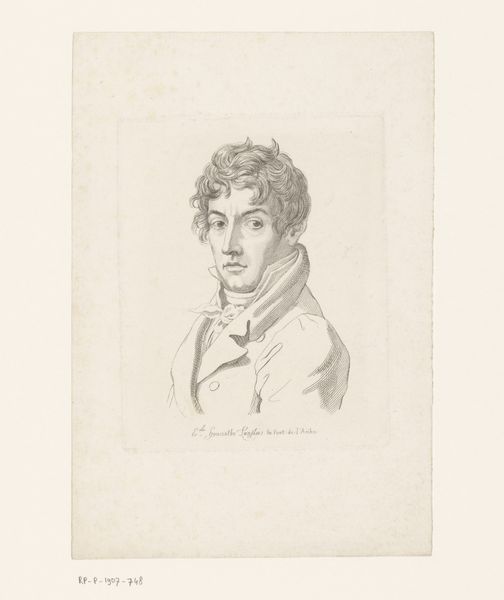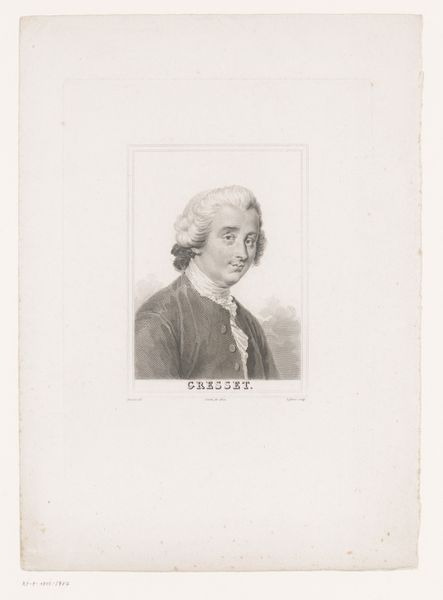
Dimensions: height 196 mm, width 135 mm
Copyright: Rijks Museum: Open Domain
Jules Porreau’s portrait of Casimir Bonjour presents us with more than just a likeness; it's a study in the iconography of identity. The ruffled cravat, the cut of the jacket, and the carefully arranged hair speak volumes. The cravat, especially, echoes the draped fabrics of classical sculpture, a deliberate invocation of timeless virtues. Consider how such elements recur across centuries, from Roman senators to Renaissance noblemen. Though the materials and styles shift, the underlying intent remains: to project authority, intellect, and status. The slightly averted gaze, a gesture seen in countless portraits, adds a layer of psychological depth. Is it modesty? Contemplation? Perhaps a hint of the inner turmoil that, as Freud would suggest, lies beneath the surface of even the most composed facade. This isn't merely a record of appearance, but a carefully constructed performance. Such symbols are not static, but constantly reshaped by the currents of history and culture. They remind us that even in the act of portraiture, we are always engaging with a complex and ever-evolving visual language.
Comments
No comments
Be the first to comment and join the conversation on the ultimate creative platform.
